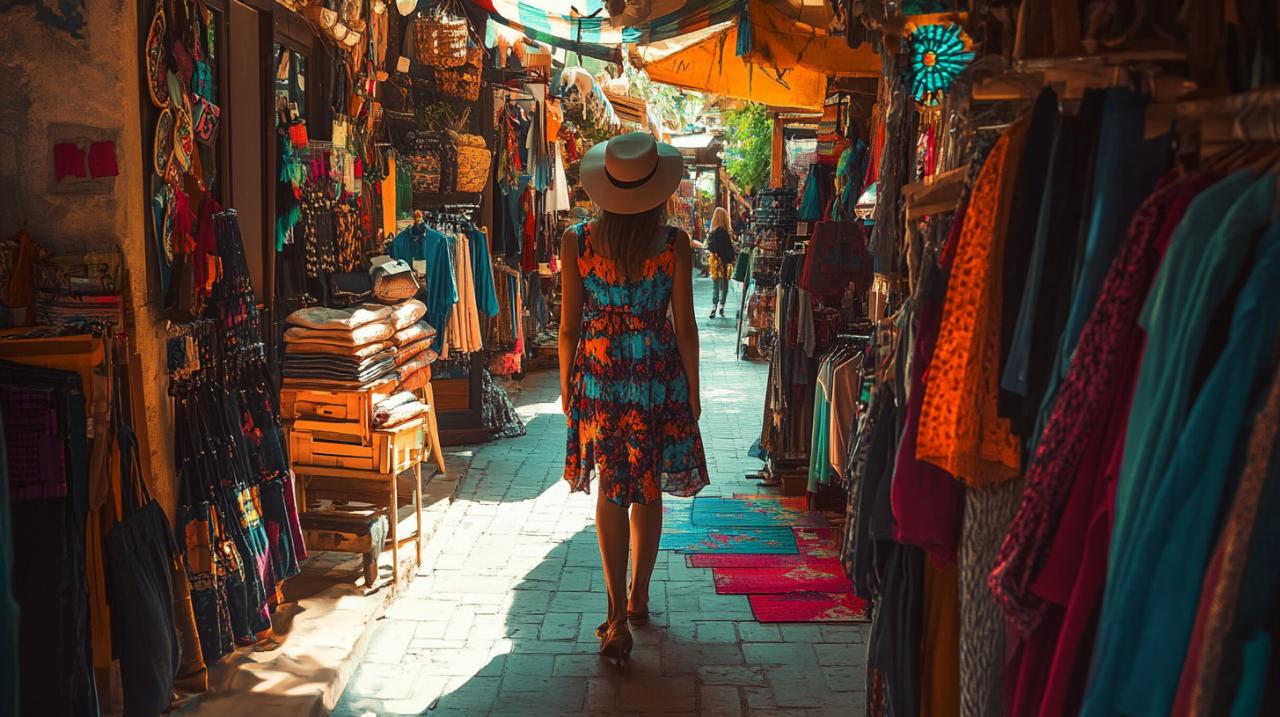Fashion enthusiasts across the nation face a familiar dilemma: the desire to look smart whilst adhering to a modest budget. For those who dream of a wardrobe brimming with character yet worry about the financial strain, there exists a wealth of strategies to embrace style without emptying one's wallet. The secret lies not in endless spending but in adopting a thoughtful approach to purchasing, mixing cherished finds with timeless staples, and exploring avenues that celebrate both creativity and sustainability.
Mastering the Art of Savvy Shopping
Shopping with intention transforms the experience from a mere transaction into an art form. The most astute fashion lovers understand that success hinges on recognising the right moment to invest and knowing where to discover hidden gems. For those keen on sustainable fashion, the landscape has shifted dramatically in recent years, offering opportunities to purchase pre-loved clothing through platforms such as Vinted and Vestiaire Collective. Vinted caters to everyday brands and accessible pieces, whilst Vestiaire Collective curates designer labels for those seeking luxury at a fraction of the original cost. Both services provide a gateway to second-hand shopping that champions circular fashion and reduces textile waste, aligning perfectly with a budget-conscious ethos.
Timing your purchases for maximum savings
Understanding when to shop can yield remarkable savings. The savviest individuals monitor seasonal sales, end-of-line clearances, and promotional events that retailers hold throughout the year. By planning ahead and resisting the urge to purchase impulsively, one can secure high-quality items at significantly reduced prices. Charity shops and vintage fairs also present excellent opportunities for thrift shopping, offering unique, old-fashioned pieces that inject personality into any ensemble. These venues not only provide affordable finds but also contribute to reducing the fashion industry's environmental impact, which currently accounts for eight to ten per cent of global carbon emissions, surpassing even international flights and maritime shipping combined.
Understanding quality versus price point
The relationship between cost and quality remains a pivotal consideration for anyone seeking to build a durable wardrobe. A garment priced higher does not automatically guarantee sustainability or longevity, nor does a modest price tag necessarily indicate poor craftsmanship. Transparency within brands has become essential, and resources such as the Good On You app and Fashion Revolution's Fashion Transparency Index serve as invaluable tools for evaluating ethical fashion credentials. Look for certifications like GOTS, B-Corp status, and the Better Cotton Initiative when assessing whether a brand aligns with your values. Choosing clothing made from natural fibres such as organic cotton, wool, linen, silk, hemp, or bamboo offers a more eco-friendly alternative to synthetic materials like polyester, nylon, and acrylic, which are oil-based and resist biodegradation. Investing in durable clothing constructed from sustainable materials ensures longevity and reduces the need for frequent replacements, ultimately saving money whilst lowering one's carbon footprint.
Building a Stylish Wardrobe Without Breaking the Bank

Creating a wardrobe that exudes elegance and versatility requires strategic thinking rather than an expansive budget. The most stylish individuals often curate their collections around timeless pieces that transcend fleeting trends. This approach not only maximises the wear of each garment but also simplifies the process of getting dressed each morning. A capsule wardrobe, built on versatile, classic designs, allows for endless combinations and reduces the temptation to chase every passing fashion fad. By focusing on quality over quantity, one can achieve a polished aesthetic that stands the test of time.
Mixing high street with vintage finds
The magic of a well-curated wardrobe lies in the harmonious blend of contemporary high street pieces and vintage treasures. Vintage shopping encourages conscious consumption and offers unique items that cannot be found in chain stores. When exploring vintage fairs or charity shops, take the time to browse slowly and consider how each piece might complement existing garments. Mixing vintage with newer items creates a distinctive style that reflects individuality whilst celebrating pre-loved fashion. Supporting local designers also enriches this mix, providing ethical and unique options that champion small-scale production and reduce shipping emissions. DIY fashion projects and upcycling present further opportunities to customise one's wardrobe, transforming forgotten garments into statement pieces. Whether through embroidery, dyeing, or structural alterations, creativity breathes new life into clothing that might otherwise be discarded. Organising or participating in swap shops provides another avenue for refreshing one's collection without spending, fostering community spirit and reducing textile waste.
Creating capsule collections that work harder
A capsule wardrobe thrives on versatility and thoughtful curation. Selecting items that can be dressed up or down, layered across seasons, and paired in multiple ways maximises the utility of each piece. Classic designs in neutral tones serve as a foundation, whilst pops of colour or pattern add personality. Ensuring proper fit is paramount, as clothing that fits correctly not only looks better but also enjoys greater longevity. Understanding how to use clothing alterations allows for minor adjustments that transform an ill-fitting garment into a favourite. Local tailoring services can refine trousers, jackets, and dresses, ensuring every item flatters the wearer. By prioritising fit and versatility, one avoids the pitfall of purchasing garments that languish unworn, which ultimately contribute to waste. The most sustainable item remains the one already residing in your wardrobe, and reassessing stored clothing can reveal forgotten gems as fashion trends cycle. Challenging oneself to rewear less-loved items encourages creativity and extends the lifespan of each piece. Rental fashion offers yet another solution for special occasions, allowing access to designer outfits without the commitment of ownership. Caring for clothes properly through gentle washing, appropriate storage, and timely repairs prolongs their life and reduces the frequency of replacement. Sustainable accessories, from bags to jewellery, further enhance an outfit whilst adhering to ethical principles. Engaging with online communities, such as those found on the marketvivo blog and similar platforms, provides inspiration and practical advice for navigating sustainable and budget-friendly fashion. These resources share tips on sourcing affordable items, avoiding online scams when purchasing designer goods, and verifying authenticity through reviews and proof of origin. By educating oneself and others, the collective shift towards conscious consumption gains momentum, challenging the dominance of fast fashion and its detrimental environmental legacy. As the fashion industry grapples with staggering levels of unsold merchandise and mounting textile waste, individual choices carry significant weight. Embracing second-hand shopping, supporting transparent brands, and investing in timeless wardrobe staples represent meaningful steps towards a more sustainable future. With thoughtful planning and a dash of creativity, it is entirely possible to cultivate a stylish, versatile wardrobe that honours both personal taste and planetary wellbeing, all whilst respecting a modest budget.
